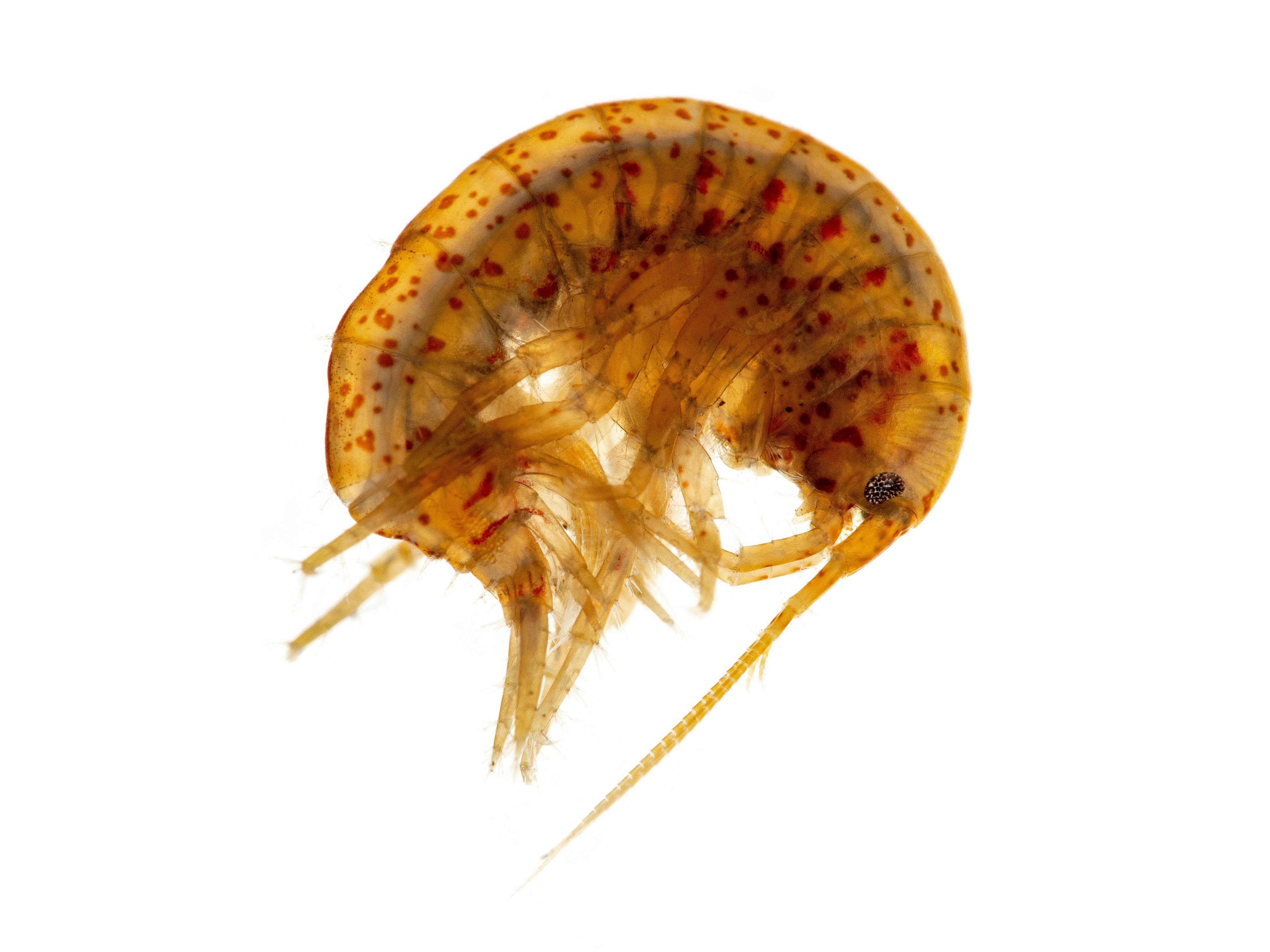Real-Time Stack Emission Measurements of Non-Traditional Odorous Species from an Industrial Processing Facility
Malodor from industry is a common problem affecting communities with minimal regulation in the United States. The sulfur-, oxygen-, and nitrogen-containing species leading to these odors are typically very reactive and have low sensory thresholds, making them difficult to measure by conventional methods. Selected ion flow tube mass spectrometry (SIFT-MS) offers real-time measurements directly from air without chromatography or sample preparation, providing an attractive alternative for these hard-to-measure volatile organic compounds (VOCs).
While odorous VOCs from industry can have a major negative impact on surrounding communities (1), they are most often managed legally and regulatorily as a nuisance, with few specific consequences resulting from environmental or government regulation. Certain countries have taken a stricter stance on these nuisance compounds, implementing tight limits for their release into the environment from industry (1,2,3). In particular, the European Union treats odor issues more rigorously due to the proximity of many industrial and agricultural sources to community receptors.
As many odor issues arise from reduced sulfur species, most odor nuisance complaints are addressed by measuring total or speciated sulfur levels from the culprit stack or looking for these sulfur species in the effluent (stack emissions, fugitive emissions, or wastewater, for example) from the industrial facility. Several government bodies have employed real-time measurement technology, including SIFT-MS, proton transfer reaction mass spectrometry (PTR-MS), and a wide variety of other analyzers, for example, cavity ring-down spectrometers to measure odorous and toxic VOCs and reduced sulfur compounds (RSCs) in ambient air (4). These instruments enable speciation of odorous VOCs and RSCs beyond a specific compound class, giving a better understanding of the problem. Instruments are placed in stationary enclosures near industry or in mobile laboratories for incident response and community monitoring (5), where VOC levels above specific thresholds can be flagged and reported.
Municipal composting facilities are well-known sources of odor (6). This article describes the application of SIFT-MS to real-time analysis of odorous compounds in stack gas at an industrial warehouse in which organic waste was processed and subject to ongoing odor complaints.
Methods
A mobile laboratory (5) containing a Voice200ultra SIFT-MS instrument (Syft Technologies, Christchurch, New Zealand) was placed next to the industrial facility, with sample tubing leading from the exhaust stacks of interest to the instrument. Sample was drawn to the instrument using a flow-past configuration with a vacuum pump drawing 5 L/min directly from the facility stack. Sample flow was also directed to a total reduced sulfur analyzer (Teledyne T101-API, San Diego, USA), which was placed in a stationary enclosure near the mobile laboratory. Targeted SIFT-MS analysis of VOCs known to be characteristic of compost odor was conducted using selected ion monitoring (SIM) mode. The specific reagent ion-product ion pairs used in the method are shown in Table 1 (ion dwell time 200 ms). All data were collected in the same continuous analysis with a cycle time of approximately 12.5 s, providing both rapid response time and high specificity. Concentrations were calculated for each VOC using parameters in the SIFT-MS compound library (LabSyft software, version 1.8.1; Syft Technologies) according to the methodology described previously (7).


Monitoring was performed for seven days over a two-week period, and data were collected either during the day for 8–10 hours, or for some days over a 24-hour period. In the first case, the time of day selected for sampling was based on the highest frequency of historic complaints. In the second week of sampling, acquisition was conducted over a 24-hour period to investigate whether additional unreported emissions were detected overnight. Periods without data acquisition correspond to refilling of the diesel generator in the mobile laboratory, during which the instrument was shut off, powered back on, equilibrated, and the routine performance check/tune (7) was conducted.
Results and Discussion
One to two major odor events were observed daily during the seven days of sampling. During these major odor events, many of the VOCs being measured reached or exceeded reported sensory thresholds from literature. Table 2 provides a short-list of several VOCs with signature odor descriptors and low sensory thresholds (8–11). The maximum measured concentration for each of those VOCs is noted, which were found to be anywhere from three times (dimethyl disulfide) to 843 times the sensory threshold value (valeric and isovaleric acid). It is noteworthy that the maximum concentration measured for valeric and isovaleric acid was 35.4 ppbV, highlighting the sensitivity of SIFT MS for these stack measurements (limit of detection was 0.57 ppbV for this study). Figure 1 shows four VOCs from unique compounds classes over the 7-day measurement period. Concentrations during an odor event ranged from the low ppbV to mid-to-high ppmV range. The events on day 2 and day 6 were corroborated by sensory experience from several staff on-site at the time. Characteristics of each odor event were similar, where the descriptive words used were “rotten,” “sour”, and “putrid.”


The VOCs shown in Figure 1 demonstrate the diversity of chemical functionalities detectable in real time using SIFT-MS. For example, traditionally difficult-to-measure species like cadaverine (12) and other amines were readily measured from this emissions source. Acetic acid is commonly present during decomposition of biological materials, and for the most part, spikes in acetic acid correlated with the release of other odorous VOCs. The bursts of VOCs measured were transient, lasting from several seconds to minutes, further confirming the requirement for real- time measurements to fully capture and understand odor issues.
Total reduced sulfur (TRS) values were compared with several of the VOCs monitored by SIFT-MS on one of the sampling days. In Figure 2, it is apparent that the TRS analyzer (A) missed a significant odor event that occurred around 10:30 a.m. on this day of sampling. This odor event is seen in the spike in the sulfur species (B) and the volatile fatty acids (VFAs) that were measured (C). It also appears that the sulfur species were emitted ahead of the large burst of VFAs.

During this large odor event, several of the measured attributed VOCs significantly exceeded their sensory thresholds, where carbon disulfide and dimethyl trisulfide were measured at maximum concentrations of 1.5 ppmV and 390 ppbV, respectively. Similarly, the VFAs have sensory thresholds in the low- to mid-pptV range, as was noted in Table 2, and multiple VFAs were measured in the mid- ppbV range, exceeding their sensory threshold 200–800-fold. Staff on-site detected strong putrid and sour odors during this event, further corroborating these SIFT-MS measurements. This stresses the importance of speciation of odorous VOCs to fully understand the magnitude of an odor problem. While not shown here, ethanol was strongly correlated with each odor event and present in high abundance, consistent with the decomposition of biological waste materials.
Conclusions
The value of continuous measurement of a wide range of odorous species is highlighted in this study. Continuous monitoring enables the frequently transient odor emissions to be detected as they occur, rather than averaged in conventional sampling and analysis approaches. Further, SIFT-MS simultaneously detects and quantifies a very wide variety of odorants (including VFAs and amines) with high sensitivity, enabling detection of events that are missed by industry standard devices, such as hydrogen sulfide sensors or total reduced sulfur analyzers. At this industrial site, it appears that most of the odor complaints and descriptors correlate most strongly with the characteristics of the VFAs. The combination of real-time analysis, broad-spectrum odor detection, and high sensitivity mean that the SIFT-MS technique may provide effective, objective instrumental corroboration of transient odor events for which complaints based on human detection were previously the only viable option.
References
(1) Mannebeck, B.; Hauschildt, H. Assessment of Environmental Odor Impacts. In Springer Handbook of Odor; Buettner, A., Ed.; Springer, 2017; pp 553−562.
(2) Bokowa, A.; Diaz, C.; Koziel, J. A.; et al. Summary and Overview of the Odour Regulations Worldwide. Atmosphere 2021, 12 (2), 206. DOI: 10.3390/atmos12020206
(3) Ministry of Environment (Air Quality Management Division), Republic of Korea. Enforcement Regulations of the Malodor Prevention Act (Ministry of Environment Ordinance No. 1055), last revised September 2023. https://www.law.go.kr/LSW/lsSc.do?section=&menuId=1&-subMenuId=15&tabMenuId=81&eventGu-bun=060101&query=%EC%95%85%EC%B7%A8%EB%B0%A9%EC%A7%80%EB%B2%95#undefined (accessed 2023-07-27)
(4) Langford, V. S. SIFT-MS: Quantifying the Volatiles You Smell… and the Toxics You Don’t. Chemosensors 2023, 11 (2), 111. DOI: 10.3390/chemosensors11020111
(5) Langford, V. S.; Cha, M. Y.; Milligan, D. B.; Lee, J. H. Adoption of SIFT-MS for VOC Pollution Monitoring in South Korea. Environments 2023, 10 (12), 201. DOI: 10.3390/environments10120201
(6) Andraskar, J.; Yadav, S.; Kapley, A. Challenges and Control Strategies of Odor Emission from Composting Operation. Appl. Biochem.
Biotechnol. 2021, 193, 2331–2356. DOI: 10.1007/s12010-021-03490-3
(7) Langford, V. S.; Dryahina, K.; Španěl, P. Robust Automated SIFT-MS Quantitation of Volatile Compounds in Air Using a Multicomponent Gas Standard. J. Am. Soc. Mass Spectrom. 2023, 34 (12), 2630−2645. DOI: 10.1021/jasms.3c00312
(8) Sheridan, B. A.; Curran, T. P.; Dodd, V. A. Biofiltration of n-Butyric Acid for the Control of Odour. Bioresour. Tech. 2003, 89 (2), 199–205. DOI: 10.1016/S0960-8524(03)00045-2
(9) Valeric Acid. ScienceDirect. Elsevier, 2021. https://www.sciencedirect.com/topics/earth-and-planetary-sciences/valeric-acid (accessed 2024-03-19)
(10) Yeretzian, C.; Blank, I.; Wyser, Y. Protecting the Flavors—Freshness as a Key to Quality. In The Craft and Science of Coffee; Folmer, B, Ed.;
Elsevier, 2017; pp 329–353. DOI: 10.1016/B978-0-12-803520-7.00014-1
(11) Amoore, J. E.; Hautala, E. Odor as an Aid to Chemical Safety: Odor Thresholds Compared with Threshold Limit Values and Volatilities for 214 Industrial Chemicals in Air and Water Dilution. J. Appl. Toxicol. 1983, 3 (6), 272–290. DOI: 10.1002/jat.2550030603
(12) Stefanuto, P.- H.; Perrault, K.A.; Stadler, S.; et al. GC×GC–TOFMS and Supervised Multivariate Approaches to Study Human Cadaveric Decomposition Olfactive Signatures. Anal. Bioanal. Chem. 2015, 407, 4767–4778. DOI: 10.1007/s00216-015-8683-5
About the Authors
Leslie Silva is an applications scientist at Syft Technologies in the United States. She joined Syft in 2020 after completing her PhD in biochemistry and molecular biology at the University of Calgary, a postdoctoral fellowship at MD Anderson Cancer Center, and research positions at Lawrence Berkeley National Laboratory and a food & beverage start-up, Endless West. She has 23 peer-reviewed publications and numerous patents, application notes, and conference papers. Direct correspondence to: leslie.silva@syft.com
Eric Winegar is an independent environmental consultant. This work was conducted while he was employed at Exponent, Inc. and Sonoma Technology, Inc. He has conducted multiple odor investigations from both industrial, public (for example, wastewater treatment plants) and agricultural operations.
Vaughan Langford is a principal scientist at Syft Technologies in New Zealand. He joined Syft in late 2002 after completing his Ph.D. in physical chemistry at the University of Canterbury, and postdoctoral fellowships at the Universities of Geneva, Western Australia, and Canterbury. He has over 30 peer-reviewed publications on a wide range of SIFT-MS applications, and has contributed numerous conference papers. Direct correspondence: vaughan.langford@syft.com

Detecting Hyper-Fast Chromatographic Peaks Using Ion Mobility Spectrometry
May 6th 2025Ion mobility spectrometers can detect trace compounds quickly, though they can face various issues with detecting certain peaks. University of Hannover scientists created a new system for resolving hyper-fast gas chromatography (GC) peaks.
Altering Capillary Gas Chromatography Systems Using Silicon Pneumatic Microvalves
May 5th 2025Many multi-column gas chromatography systems use two-position multi-port switching valves, which can suffer from delays in valve switching. Shimadzu researchers aimed to create a new sampling and switching module for these systems.

.png&w=3840&q=75)

.png&w=3840&q=75)



.png&w=3840&q=75)



.png&w=3840&q=75)













